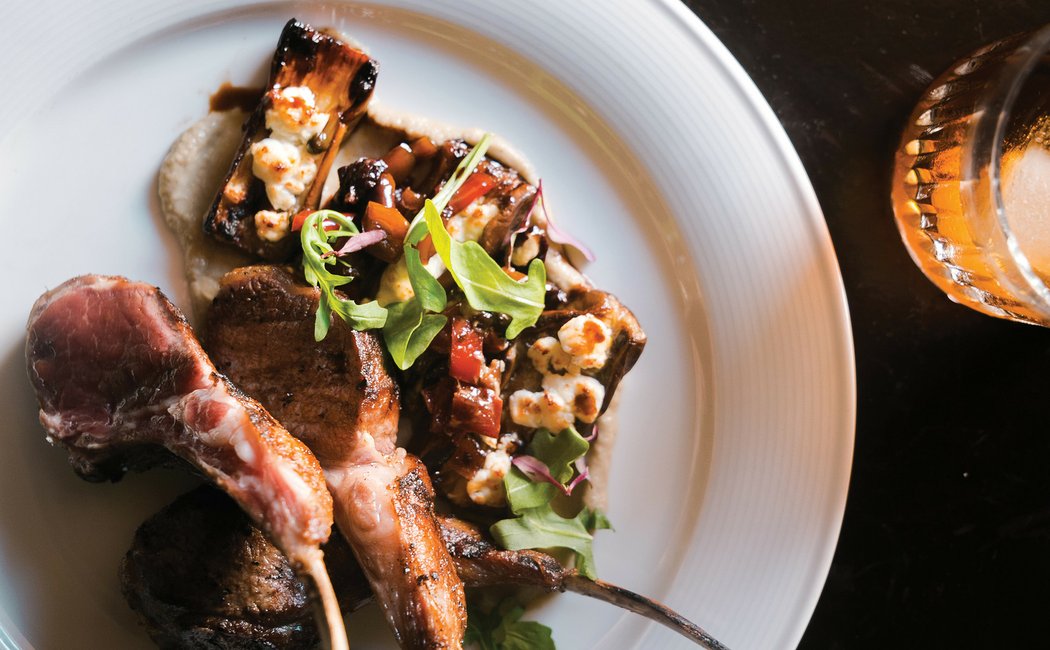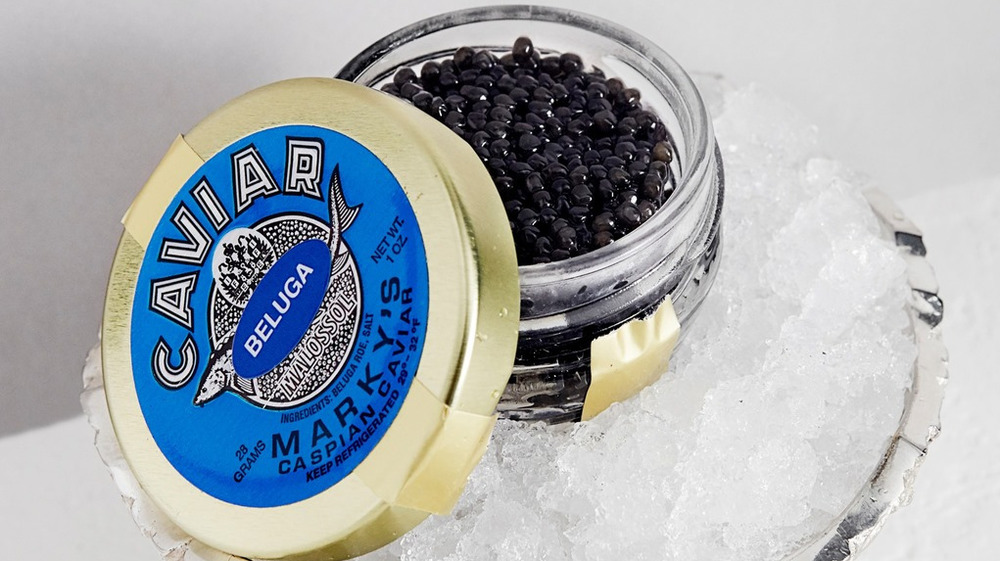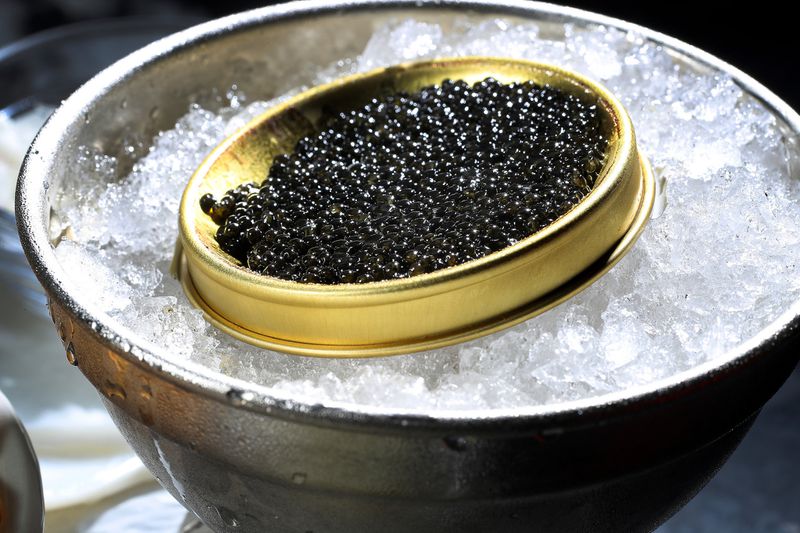Gourmet French Recipes for the Tastiest Bastille Day Celebration 2018
It looks like in the late 18th century the river of history decided to change its flow abruptly and shape a brand-new landscape of the world.
About a week ago we commemorated the bold step of our Founding Fathers. Hope you were enjoying the celebration of the 242nd anniversary of independence of the United States and having a great time together with your dearest and nearest.
But did you know that our Declaration of Independence and the American Revolution itself inspired thousands of people across the Atlantic Ocean to manifest their rights in the so-called Declaration of the Rights of the Man and of the Citizen? This document was set in France in August 1789 and became one of the greatest achievements of the French Revolution.
Successful though fierce storming of the Bastille prison in Paris, which took place on July 14th, 1789, appeared a turning point of the revolution in France and its colonies.
The bloody fight of the French people for liberté, égalité, and fraternité (these are liberty, equality, and fraternity) turned worth their endeavors and met their expectations. France was finally set free from the yoke of monarchy.
One year later, on July 14th, 1790, the French gathered to celebrate the Fête de la Fédération (Festival of the Federation). The festival honored the heroes and achievements of the French Revolution and proclaimed national unity.
That very celebration can be considered the precursor of Bastille Day as we know it today, despite the fact that officially the July 14th became an annual French national holiday 90 years later, in 1880.
Still, why should we care? What makes Bastille Day in France such special occasion here, in the United States of America?
Some Unexpected Facts About Bastille Day (That Connect It with the US)
Firstly, the French themselves don’t use the name “Bastille Day”. It is widely accepted in English-speaking countries, however, because it appears hardly possible to translate the official French names of the holiday literally so that it is clear what exactly is celebrated.
The French people call it la Fête nationale (the National Celebration) or le 14 Juillet (the 14th of July).
Secondly and consequently, the holiday observes not the storming of the Bastille prison as the culmination of the French Revolution but the unity of the French nation in their desire to live a better life.
Apparently, that might concern the descendants of French settlers in North America too.
So, in 1906 a Frenchman, Eugene Eleazar, was the first to encourage local people in New Orleans and Rayne, Louisiana, to celebrate Bastille Day. However, he found no support.
But then in Kaplan he met farmers who “would travel for miles” to celebrate the holiday. So, this is where the whole thing started.
Nowadays Bastille Day celebrations are held all across the country. Surely, they can’t go without festive parades, local pétanque competitions, waiter races, and sumptuous dinners. Indeed, July 14th in the US is the perfect time to remember not only some historical facts but just everything we like about France and its people.
Here at Marky’s we believe that their culinary taste is one of their most wonderful personal advantages. After all, let’s thank the French at least for coming up with the ideas and names of their traditional specialties, meals courses, food establishments, and restaurant staff members.
By the way, during the French Revolution chefs who had cooked for the rich and noble were forced to open public restaurants to earn some living. And this is where the art of French dining takes its roots from.
So what about treating your family and friends with something “Frenchly” delicious on Bastille Day? Well. While you are adding the final touches to the treats, your guests can entertain themselves with some foie gras or rillettes and crunchy baguettes. But don’t forget to show them where the wine is.
And now let’s take a look at the festive French recipes selected specially for this holiday. Make your celebration diverse and exquisite together with Marky’s Gourmet Store.
Salade Niçoise
Right, this is a salad. And its name should be pronounced niˈswaz. It originated in sunny Nice in the late 19th century and was mostly considered as “simple food for poor people.” Before it turned into a flavorful world-known masterpiece of French cuisine, it had been just a mixture of anchovies, fresh tomatoes, and olive oil.
Henri Heyraud was probably the first to write down the recipe of the salad in 1903. But since that time there has been a culinary disagreement between traditionalists and innovators regarding the correct, original set of the salad’s ingredients. Besides, those guys still can’t decide if the salad should be tossed or not.
As a result, today you can come across quite a lot of variations of a Niçoise salad. But the one we have here looks like the most traditionally accurate.
Ingredients:
For the salad:
- 1 can oil-packed tuna, drained
- 1/3 c. Niçoise olives
- 1/2 pound fingerling potatoes
- 2 medium tomatoes, quartered
- 2 large eggs
- 4 oz. green beans
- 3 c. salad greens
For the vinaigrette:
- 1/2 c. olive oil
- 1 tsp. Dijon mustard
- 1/4 c. white wine vinegar
- 1 clove garlic, minced
- salt and freshly ground pepper to taste
Directions:
1. Prepare the vinaigrette: whisk together the mustard, vinegar, minced garlic, salt, and pepper in a bowl. Then pour in the oil and continue whisking until the dressing gets emulsified.
2. Boil the eggs, cool, peel, and quarter them.
3. Boil the potatoes until they get tender and can be pierced with the knife easily (about 10 min.). Drain and set aside to cool.
4. Cook the green beans until they are crisp-tender (about 3-4 min.). Drain and set aside to cool.
5. Mix the greens with the ready vinaigrette and divide between two or more plates.
6. Slice the cooked potatoes crosswise and dress with the vinaigrette. Arrange in small piles on the plates.
7. Use the rest of the vinaigrette to dress the tomatoes, eggs, and beans. Transfer the tossed ingredients to the plates and arrange them neatly.
8. Arrange the olives and place some tuna in the middle of the plate. Drizzle the remaining vinaigrette over the salad.
Warm French Lentil Salad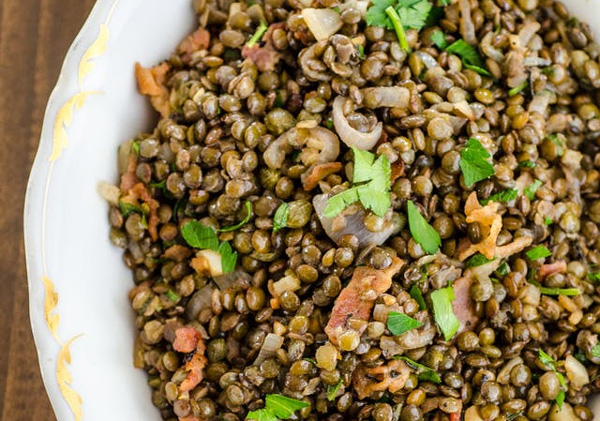
Here is a savor treat from Toulouse. This salad is a powerhouse of different strong flavors that combine in a surprisingly tender and even harmonious way.
You might even ask your guests to guess which ingredients you used after they enjoy the very first bite. But be ready they will ask for one or two more. So let them take their time and please their palates.
Here is the unobtrusive recipe of this delightful salad.
Ingredients:
- 1 c. green lentils
- 4 oz. bacon, cut into small pieces
- 2 tbsp. capers, chopped roughly
- 2 c. chicken broth
- 4 cloves garlic, minced
- 2 large shallots, halved and sliced thinly
- 3 large sage leaves, minced
- 1/2 c. parsley, chopped roughly
- 3 large sprigs rosemary, leaves stripped and minced
- 1/4 tsp. salt (more to taste)
- freshly ground black pepper to taste
- 1 tbsp. Dijon mustard
- 3 tbsp. extra-virgin olive oil
- 1/2 tbsp. balsamic vinegar
Directions:
1. Put the washed and rinsed lentils in a saucepan and cover with the broth. Boil and lower to simmer. Cook for 20-25 min. more. Add some water if the liquid gets lower. Drain the cooked lentils, stir in salt, and set aside.
2. While the lentils are boiling, fry the bacon over medium heat until the meat is crispy. Drain the fat and add the minced garlic, sliced shallots, minced sage, and minced rosemary leaves. Fry for 2-3 min. more until the garlic and shallots get tender. Remove from the heat.
3. Prepare the dressing: whisk the mustard, olive, and vinegar until the mixture gets thicker. Add the lentils, bacon, and garlic and shallot mixture. Stir in the capers and parsley. Season with salt and pepper.
4. Serve warm and enjoy.
Baked Croque-Monsieur
Simply put, it is a fried or baked sandwich made with ham and cheese. The history of this snack starts at French cafes in the beginning of the 20th century.
A “croque monsieur” actually means “mister crunch”. And a “croque madame” is the variant of the same snack topped with a fried egg. The first mention of the treat is believed to come from volume two of Marcel Proust’s “In Search of Lost Time,” published between 1913 and 1927.
But how could you turn a few simple sandwiches into a festive dish? The French are giving you a hint: cook a casserole.
You’ll need to coat a baking dish with butter and place 5-6 crusty bread slices, previously slathered with Dijon mustard, in it. (Take one day old bread.)
Then whisk 7 eggs and 2 cups of milk together with salt and pepper in a large bowl. Spoon a half of this mixture over the bread, covering each piece fully. Sprinkle some chopped fresh chives.
Make a layer of ham (you’ll need about 12 oz.). Sprinkle it with 1 cup of Gruyere cheese. And place 5-6 bread slices, previously smothered with mustard, over the cheese layer (place the bread Dijon-side down).
Pour over the rest of the egg mixture and sprinkle with the other cup of cheese. Cover the casserole and refrigerate for the minimum of 30 minutes.
Bake the dish uncovered at 350°F until the cheese gets bubbly and a little browned – about 40 minutes. After the casserole is ready, let it cool for 5-10 minutes. In the meantime, mix some olive oil, lemon juice, and arugula in a bowl to cover the dish right before serving.
The Guest from Alsace: Roïgabrageldi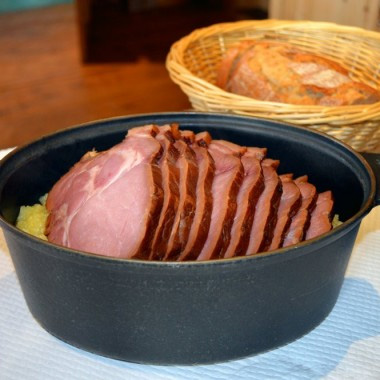
If you happen to live in Washington, D.C., or are going to visit it on July 13th-14th, you’ll have a great chance to taste some traditional Alsatian specialties.
This year, his Excellency Gérard Araud, Ambassador of France to the United States, is patronizing the Bastille Day celebration, which is showcasing the region of Alsace in the capital, and inviting the best local chefs to treat the guests with true Alsatian cuisine.
Interestingly, it’s quite different from French cuisine and has more common gastronomical features with German cuisine.
So why not cook something traditional for Alsace at home, adding some piquancy to the menu?
Yep, roïgabrageldi (and don’t even bother yourself to pronounce it correctly) is going to be a scrumptious festive option for the main course. Call this dish “meat and potatoes” because these are its basic ingredients.
Peel and wash potatoes (about 1 lb.) and onions (about 1 lb.). Slice the onions and cook in hot salted water for 20 min. In a large baking dish arrange a layer of bacon (10 slices or to taste), a layer of previously sliced potatoes, and a layer of cooked onions. Sprinkle with salt to taste. And make new layers of the bacon and potatoes.
Bake the dish in the oven for 1,5 hours, until the potatoes are brownish. Meanwhile, cook the pork loin (about 1/2 lb.) in chicken broth for 1 hour. When the loin gets ready, cut it into equal parts and serve with the potatoes and bacon.
Greens and spices are optional.
When the Table Gets Cleared
…It’s the right time for the dessert! By the way, this French word originally stands for treats served after all other dishes are removed or “dis-served” from the table. Sounds logical, doesn’t it?
Delicious, subtle macarons are probably the very first dainties that occur to us when we start imagining French sweet courses.
The origin of macarons traces back to the 8th century A.D. At that time they were produced in the Venetian monasteries in Italy. Italian pastry chefs who served French queen Catherine de' Medici helped her bring macarons to France only eight centuries later – that is in the 16th century.
French monarchs definitely had good tastes, though along with cruel ambitions.
Yet, macarons have become a real culinary trend all around the world. And the Bastille Day celebration can hardly go without them.
One more idea to finish your festive dinner is a cheese platter. Yes, according to the French traditions, a decent cheese assortment, served with fruit and nuts, turns into a perfect dessert.
Here are some outstanding combinations:
- Brie + goat cheese + Cantalet
- Fourme D'Ambert + Saint Andre + Mimolette
- Roquefort + Camembert + Comte
So, the menu is set. Don’t forget to choose a wine for the dinner and get some tasty beverages for kids too.
Bon Appetit and Happy Bastille Day!




